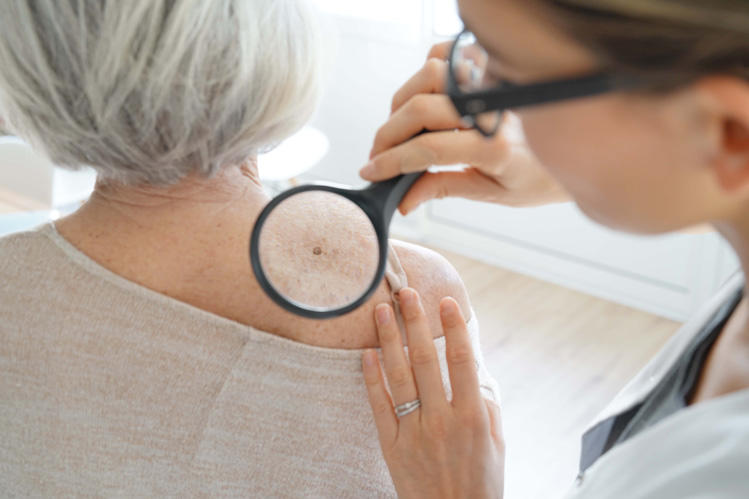Protect your skin potential skin cancer with early detection and professional treatment options.
Protect your skin potential skin cancer with early detection and professional treatment options.
Blog Article
Navigating Skin Cancer Therapy: The Necessary Function of Mohs in Modern Dermatology Practices
Skin cancer, a daunting medical diagnosis, typically leaves clients grappling with countless therapy options. Among these, Mohs surgical procedure stands as a sign in modern dermatology, renowned for its thorough technique to cancer elimination and conservation of bordering healthy cells. This innovative technique guarantees not only superior cosmetic end results yet likewise provides immediate results, reducing individual stress and anxiety. As we check out the ins and outs of this procedure, one will appreciate its crucial function in skin cancer therapy.
Recognizing Skin Cancer Cells: Kinds and Dangers
Skin cancer cells, a potentially lethal malady, is even more common than many individuals recognize. This disease, triggered by the unchecked growth of abnormal skin cells, mainly results from DNA damages because of exposure to the sun and ultraviolet (UV) light. There are 3 major types of skin cancer: Basal cell carcinoma, Squamous cell carcinoma, and Melanoma. While the former two are much less dangerous and compose most of identified situations, cancer malignancy is one of the most hazardous. It makes up just concerning 1% of skin cancer cells instances but causes the large majority of skin cancer deaths - mohs surgery. Threat variables consist of reasonable skin, background of sunburn, too much sunlight direct exposure, living at high elevations or near the equator, having lots of moles, a family members background of skin cancer cells, and deteriorated body immune system.
What Is Mohs Surgery and How It's Revolutionizing Skin Cancer Cells Therapy
Despite the many treatments presently available for skin cancer cells, Mohs surgery sticks out as a groundbreaking and highly reliable service. Called after Frederic E. Mohs, the doctor that established the treatment, Mohs surgery is a specific surgical strategy used to treat skin cancer cells. During the procedure, slim layers of cancer-containing skin are progressively gotten rid of and analyzed till only cancer-free cells remains. This strategy permits the cosmetic surgeon to validate that all cancer cells have been removed at the time of surgical procedure. This level of precision, incorporated with the capability to spare as much healthy and balanced cells as possible, is reinventing skin cancer cells treatment. Therefore, Mohs surgical procedure has actually become a foundation of modern-day dermatology techniques.
The Advantages of Mohs Surgical Treatment Over Conventional Skin Cancer Therapies
Structure on the innovative nature of Mohs surgical treatment, it's imperative to consider its many benefits over conventional skin cancer cells therapies. Unlike basic treatments, Mohs offers a higher treatment price, frequently getting to 99% for new treatments and 94% for frequent cancers. Additionally, it lessens damages to healthy and balanced skin, leading to less scarring and enhanced aesthetic get more end results.
The Procedure of Mohs Surgery: What to Expect Throughout the Refine

Potential Negative Effects and Post-Operative Care of Mohs Surgery
Going through Mohs surgical treatment, like any various other surgical treatment, entails prospective negative effects that clients must recognize. Typical negative effects include discomfort, wounding, and swelling at the surgery site. These are usually short-term and workable with non-prescription discomfort medication and ice packs. In rare situations, individuals might experience infection, blood loss, or a sensitive reaction to the local anesthetic. Post-operative care is vital to recovery and decreasing negative effects. This usually includes maintaining the injury tidy and completely dry, taking proposed medicines, and staying clear of arduous tasks. Patients should also attend all follow-up appointments for wound treatment and surveillance. In some cases, additional therapies might be essential to make certain full elimination of the malignant cells. Sticking to these post-operative care guidelines can greatly enhance recovery Visit Website and end results.
Conclusion

Report this page